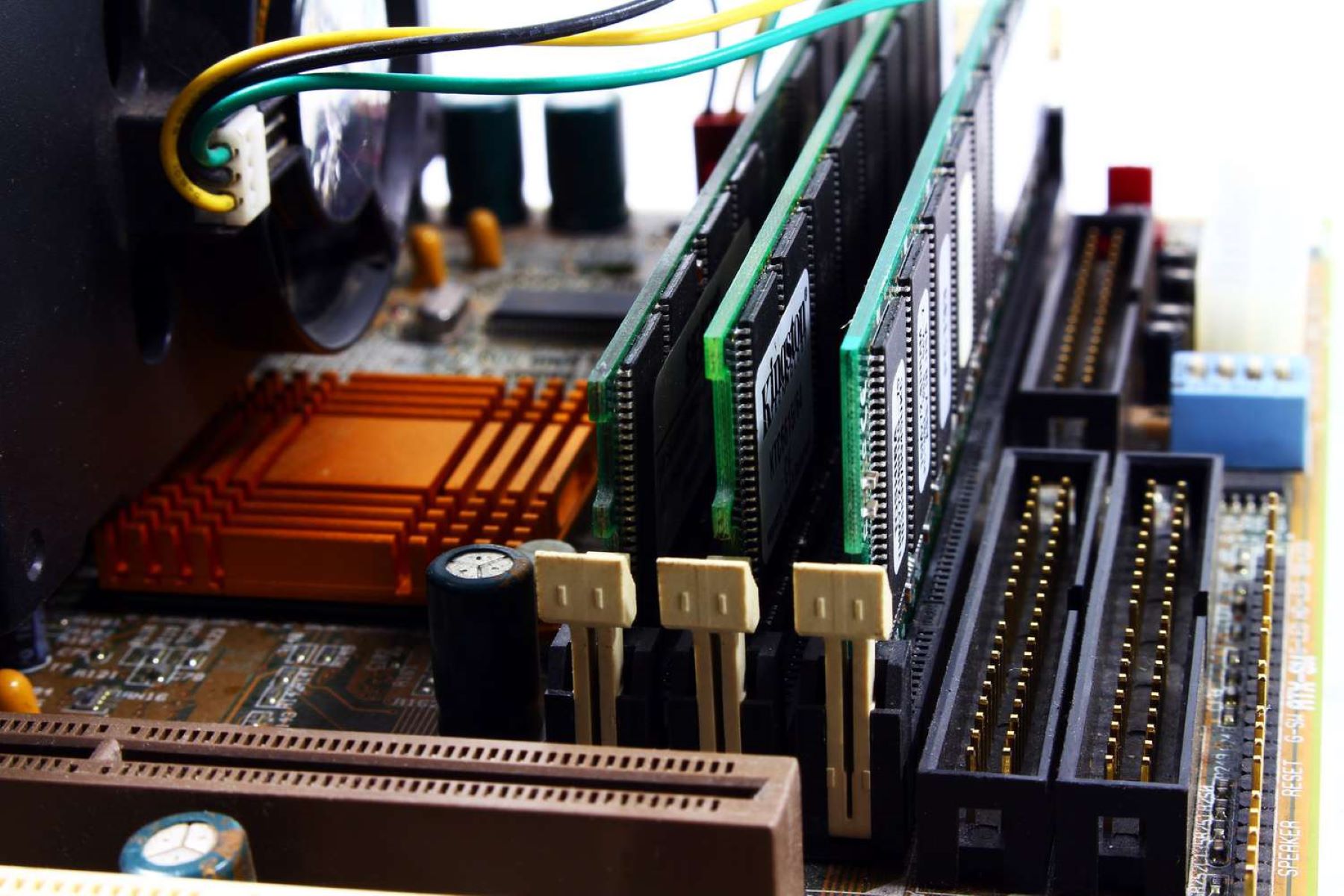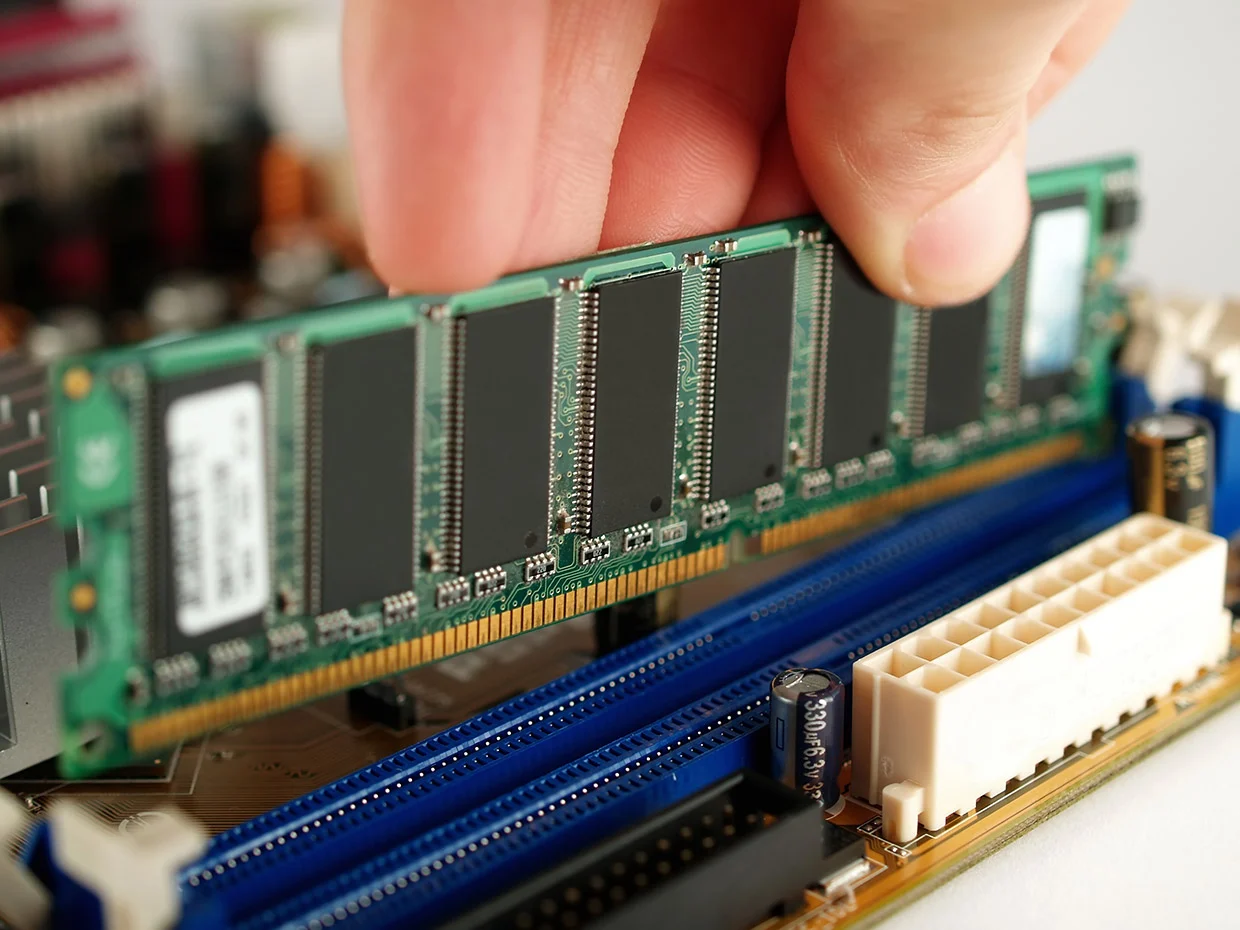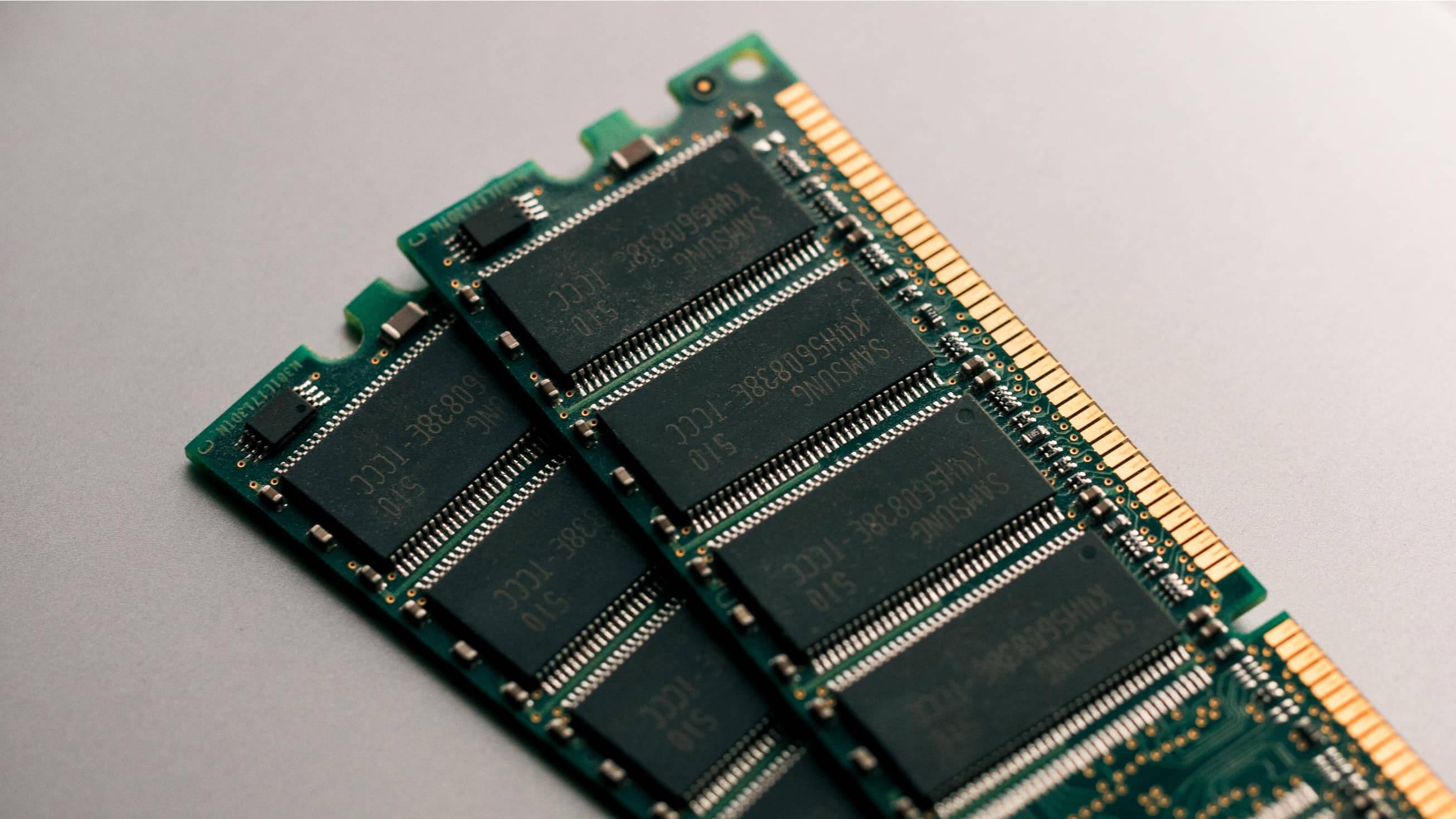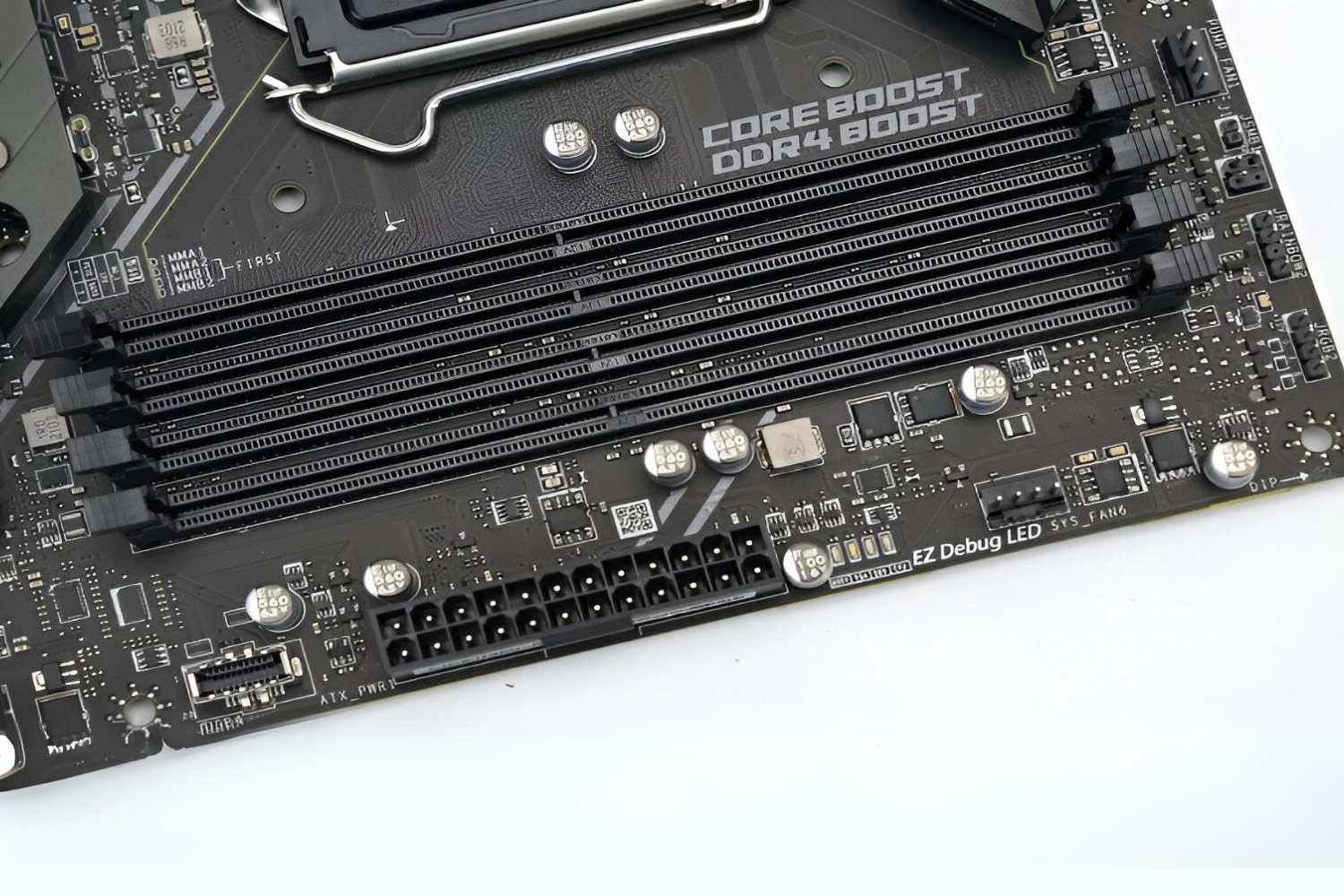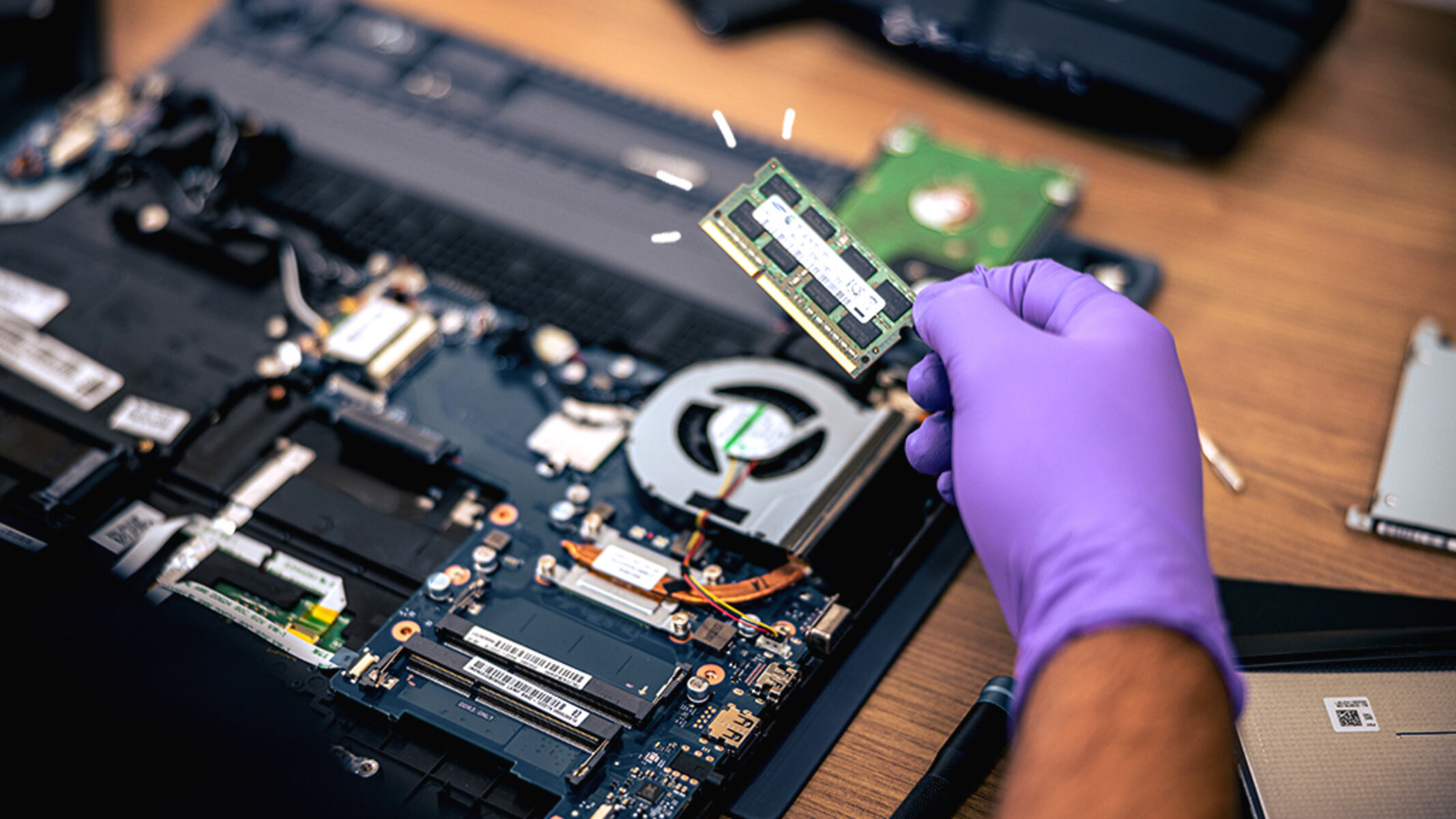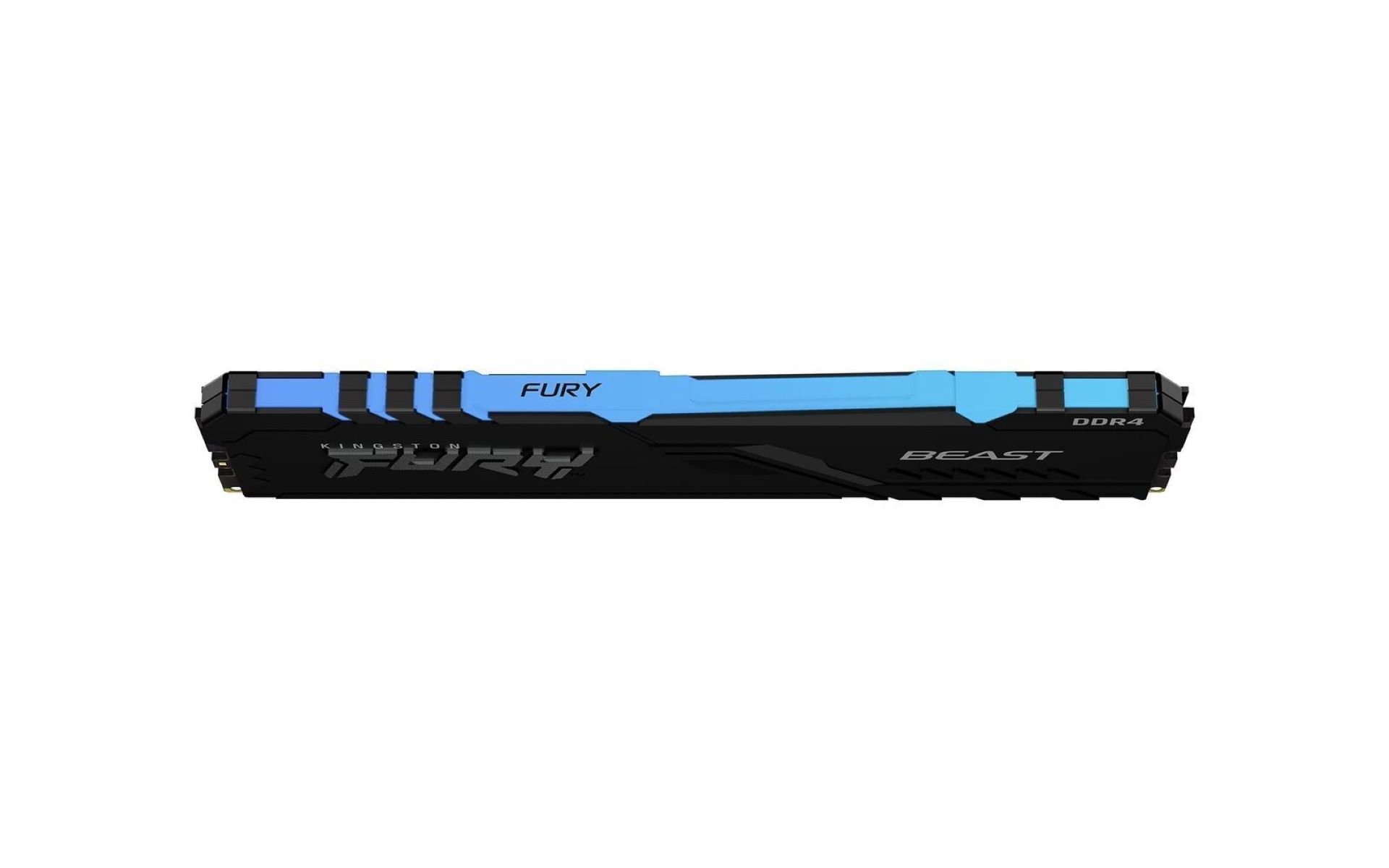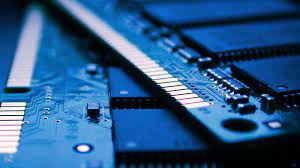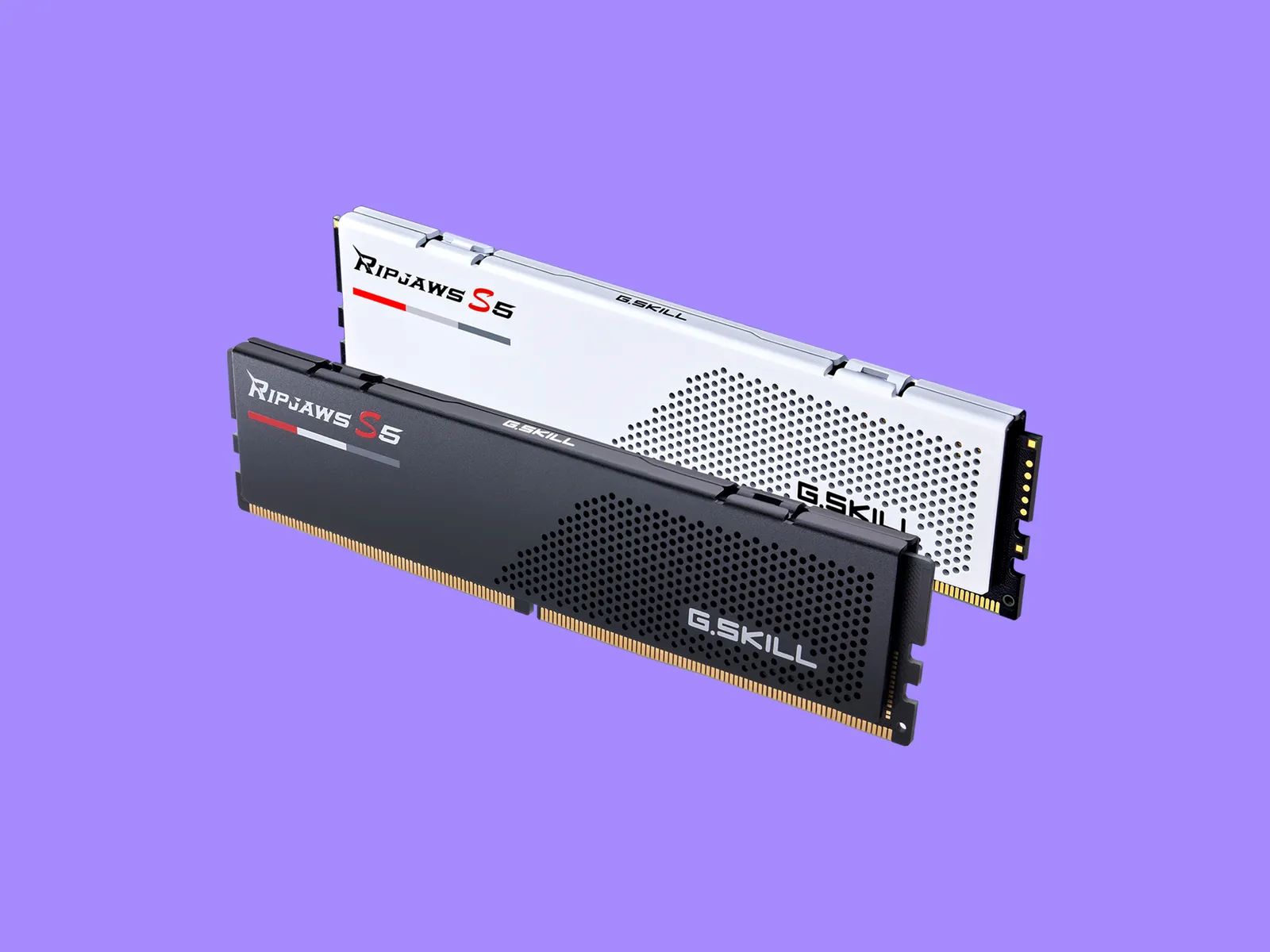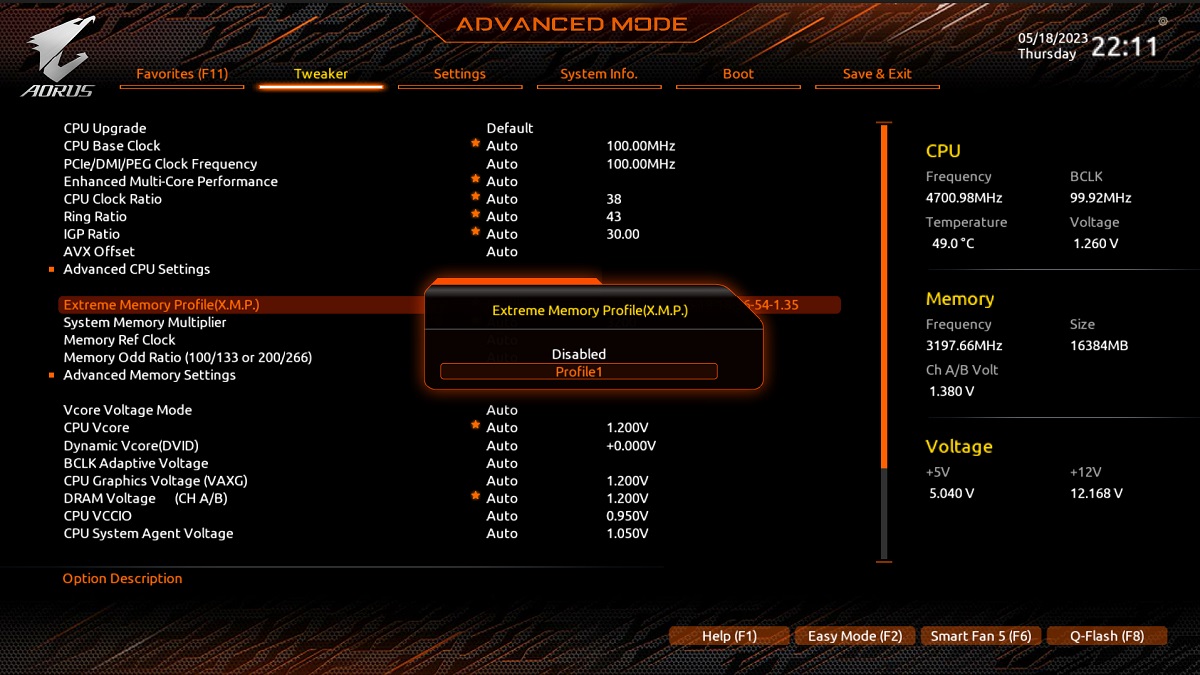Introduction
Welcome to the world of computer hardware! In this article, we will explore the fascinating world of DRAM on motherboards. If you’re a tech enthusiast or just curious to learn more about how computers work, you’ve come to the right place. We’ll delve into the basics of DRAM, examine its role on motherboards, discuss its different types, and explore its importance in the overall functionality of a computer system.
Digital Random Access Memory, commonly known as DRAM, is a crucial component of modern computer systems. It is responsible for storing data that the computer’s processor needs to access quickly. Without DRAM, computers would not be able to perform tasks efficiently.
But what about motherboards? What is their role in this equation? Well, the motherboard serves as the central hub of a computer system, connecting various components together. It acts as a backbone, providing power and data connections to key hardware components, including the processor, storage devices, graphics card, and, of course, the DRAM.
Understanding how DRAM works on a motherboard is essential for anyone looking to optimize their computer’s performance, troubleshoot issues, or even build their own PC. So, let’s dive into the intricate world of DRAM on motherboards and discover the secrets behind this vital component.
What is DRAM?
DRAM, or Dynamic Random Access Memory, is a type of semiconductor memory that is used in personal computers, laptops, servers, and other electronic devices. It is a volatile memory, which means that it requires constant power to retain the stored data.
DRAM is characterized by its ability to store and access data randomly, which makes it different from other types of memory, such as hard drives or solid-state drives. This random access capability allows the processor to quickly retrieve and modify information whenever needed.
The structure of DRAM consists of a capacitor and a transistor for each bit of data stored. The capacitor holds an electrical charge, which represents either a 0 or a 1, the basic building blocks of binary data. The transistor acts as a gate, controlling the flow of charges into and out of the capacitor.
One of the key advantages of DRAM is its high density. It allows for a large amount of data to be stored in a small physical space, making it ideal for memory-intensive applications. However, this high density comes with a disadvantage – the capacitors used in DRAM gradually lose their charge over time. To prevent information loss, the memory cells need to be periodically refreshed, hence the name “dynamic” random access memory.
DRAM operates at high speeds, enabling fast data access and retrieval. This makes it ideal for tasks that require frequent data updates, such as running applications, gaming, and multitasking. However, compared to other types of memory like SRAM (Static Random Access Memory), DRAM has a higher access latency, meaning it takes longer for the data to be retrieved.
Overall, DRAM plays a crucial role in the functioning of a computer system. It provides the necessary working memory for the CPU to process instructions and perform calculations. The higher the amount of DRAM available, the more efficiently the computer can handle complex tasks and run resource-intensive applications.
What is a Motherboard?
A motherboard, sometimes referred to as the mainboard or system board, is the central component of a computer system. It acts as the foundation, providing the electrical and mechanical connections between various hardware components, enabling them to communicate and work together harmoniously.
The motherboard is a printed circuit board (PCB) that holds and connects critical components of the computer, including the processor, memory, storage devices, expansion slots, and input/output ports. It serves as a hub, allowing these components to work in sync and ensuring smooth operation of the system.
One of the essential functions of the motherboard is to provide power to the connected hardware components. It receives power from the power supply unit and then distributes it to various parts of the computer, such as the processor, memory modules, and other peripherals.
In addition to power distribution, the motherboard also facilitates data communication between components. It has various buses and connectors that transmit data between the processor, memory, storage devices, and other peripherals. These buses include the front-side bus (FSB), which connects the processor to the memory and other components, and the Peripheral Component Interconnect Express (PCIe) slots, which allow for the addition of expansion cards like graphics cards, network adapters, and sound cards.
The motherboard also includes a BIOS (Basic Input Output System) or UEFI (Unified Extensible Firmware Interface), which provides the necessary firmware to boot up the computer and initialize the hardware components. The BIOS/UEFI also contains settings that can be modified to customize the system’s behavior, such as the boot order or overclocking options.
Furthermore, the motherboard houses slots for memory modules, allowing users to expand the system’s memory capacity. The type and number of memory slots on a motherboard determine the compatibility and maximum memory capacity of the system.
Overall, the motherboard is the backbone of a computer system, providing the infrastructure necessary for all the hardware components to communicate and work together. Without a properly functioning motherboard, the computer cannot function. It is essential to choose a motherboard that meets the requirements of the desired system configuration and provides reliable performance.
How Does DRAM Work on a Motherboard?
DRAM, as we mentioned earlier, is a crucial component of a computer system, and its efficient functioning relies on the motherboard. Let’s dive into how DRAM interacts with the motherboard and contributes to the overall performance of the system.
When a computer is powered on, the motherboard’s BIOS/UEFI initializes the system and performs several checks. It then identifies the installed DRAM modules and configures them for optimal operation. This includes setting the memory timings, voltage, and frequency based on the manufacturer’s guidelines or user-defined settings.
Once the DRAM is configured, it is ready to store and retrieve data. When the processor of the computer needs to read or write data, it sends commands to the memory controller on the motherboard. The memory controller communicates these commands to the DRAM via the memory bus.
The DRAM modules consist of multiple memory cells, each capable of storing a bit of data. These memory cells are organized into rows and columns, forming a matrix-like structure. To access a specific memory location, the memory controller sends the appropriate row and column address to the DRAM module.
When a read command is issued, the DRAM activates the row containing the requested data and accesses the corresponding column. The data is then transferred back to the memory controller for further processing by the CPU. Similarly, when a write command is issued, the memory controller sends the data to be written, along with the row and column address, for storage in the DRAM module.
It is important to note that DRAM is a volatile memory, meaning that the data stored in it is lost when power is cut off. To retain the data, the DRAM modules need to be constantly refreshed. This is done by periodically accessing each row of the DRAM and reading its data, then rewriting it back to the same row. This process, known as a refresh cycle, ensures that the stored information remains intact.
The performance of DRAM on a motherboard can be influenced by several factors, such as the memory timings, voltage, and frequency settings. Adjusting these settings can affect the speed and stability of the memory subsystem. Overclocking, which involves running the DRAM modules at higher frequencies or tighter timings than standard specifications, can potentially improve performance but requires careful consideration to avoid stability issues or data corruption.
Overall, DRAM and the motherboard work together to ensure fast and reliable data access in a computer system. The motherboard provides the necessary infrastructure and interfaces for the DRAM modules to function optimally, while the DRAM modules store and retrieve data at high speeds, enabling efficient and responsive performance.
Different Types of DRAM on Motherboards
When it comes to DRAM, there are several different types commonly used on motherboards. Each type has its own characteristics and advantages, catering to specific needs and requirements. Let’s take a closer look at some of the most prevalent types of DRAM found on motherboards.
1. DDR (Double Data Rate) DRAM: DDR DRAM is one of the most common types used on modern motherboards. It has evolved through several generations, including DDR, DDR2, DDR3, and DDR4. DDR memory modules offer an increase in data transfer rates compared to the previous generation, allowing for improved performance and responsiveness.
2. SDRAM (Synchronous DRAM): SDRAM is another popular type of DRAM, often used in older motherboards. It operates in synchronicity with the system clock, providing faster access times and reduced latency compared to older asynchronous DRAM technologies.
3. ECC (Error-Correcting Code) RAM: ECC RAM includes additional circuitry to detect and correct memory errors, ensuring data integrity and system stability. It is commonly used in server-grade motherboards or systems that require exceptional reliability, such as mission-critical applications or data centers.
4. GDDR (Graphics Double Data Rate) RAM: GDDR RAM is specifically designed for use in graphics cards and is often integrated into the graphics processing unit (GPU). It offers faster data transfer rates and higher bandwidth to meet the demanding needs of modern graphics-intensive applications, such as gaming or 3D rendering.
5. LPDDR (Low Power Double Data Rate) RAM: LPDDR RAM is designed for use in power-constrained devices, such as mobile phones, tablets, and laptops. It offers low power consumption while maintaining decent performance, making it ideal for portable devices that prioritize battery life.
6. HBM (High Bandwidth Memory): HBM is a type of stacked memory that offers significantly higher bandwidth compared to traditional DRAM. It is commonly used in high-performance computing applications, such as graphics cards or advanced data processing systems.
It’s important to note that the compatibility of DRAM modules with a specific motherboard depends on the motherboard’s memory slots and supported memory types. When choosing DRAM for a motherboard, it is crucial to ensure compatibility and adhere to the motherboard’s specifications.
By understanding the different types of DRAM available for motherboards, users can make informed decisions based on their specific requirements, whether it be gaming, content creation, or general computing needs. The right choice of DRAM can have a significant impact on system performance and overall user experience.
Importance of DRAM on Motherboards
DRAM plays a crucial role in the overall performance and functionality of a computer system. It serves as the primary working memory for the CPU, enabling fast and efficient data access and storage. Let’s explore the importance of DRAM on motherboards in more detail.
1. Speed and Responsiveness: DRAM provides the CPU with fast and responsive memory access. It allows the processor to quickly read and write data, providing the necessary resources for running applications, multitasking, and handling complex tasks. The higher the amount of DRAM available, the smoother and more seamless the user experience becomes.
2. Multitasking and Complex Applications: DRAM’s capacity and speed are crucial for handling multitasking and memory-intensive applications. When running multiple applications simultaneously, each program requires a portion of the memory for its data and instructions. Ample DRAM capacity ensures that the system can handle multiple tasks efficiently without experiencing performance bottlenecks.
3. Gaming Performance: Gaming enthusiasts understand the importance of DRAM in achieving smooth gameplay and minimizing lag. Games with high-resolution graphics, extensive worlds, and complex physics rely on the system’s memory capacity and speed. Sufficient DRAM enables faster loading times, smoother gameplay, and fewer frame rate drops, enhancing the overall gaming experience.
4. Virtualization and Productivity: Virtualization, the process of running multiple operating systems or virtual machines simultaneously, heavily relies on DRAM. Each virtual machine requires dedicated memory resources to function efficiently. Having an adequate amount of DRAM allows for smooth virtual machine operations, promoting productivity, and enabling users to work seamlessly across multiple environments.
5. Data Storage and Retrieval: DRAM acts as a temporary storage space for data that the CPU needs to access quickly. It holds the data needed for active processes and ensures that the processor can retrieve it efficiently whenever required. Without DRAM, the computer would rely solely on slower storage devices like hard drives or solid-state drives, resulting in a significant performance decrease.
6. Overclocking and Performance Boost: Overclocking, the process of increasing the clock speed or tightening the timings of DRAM modules, can provide a performance boost to the system. Overclocking DRAM can result in faster data transfer rates and reduced latency, enhancing overall system performance. However, it requires careful consideration and knowledge to ensure stability and avoid potential issues.
In summary, DRAM is crucial for a wide range of computer operations, from basic multitasking to running memory-intensive applications and gaming. It provides the necessary working memory for the CPU, ensuring efficient data storage and retrieval. The right amount of DRAM enhances the speed, responsiveness, and overall performance of the computer system, allowing users to maximize productivity and enjoy a seamless computing experience.
Common Issues with DRAM on Motherboards
While DRAM is a vital component of computer systems, it is not without its fair share of potential issues. Understanding common problems that can arise with DRAM on motherboards can help in troubleshooting and resolving these issues effectively. Here are some of the most common issues associated with DRAM on motherboards:
1. Compatibility Issues: Not all DRAM modules are compatible with every motherboard. Mixing incompatible types or using modules that do not meet the motherboard’s specifications can lead to system instability, frequent crashes, or even failure to boot. It is important to ensure the compatibility of the DRAM with the motherboard before installation.
2. Inadequate or Insufficient RAM: Insufficient DRAM capacity can lead to system performance issues, especially when running memory-intensive applications or multitasking. If the system lacks enough memory, it may experience slow response times, lag, and overall decreased performance. Upgrading to a larger capacity or adding more DRAM modules can resolve this issue.
3. Memory Errors and Instability: DRAM is prone to occasional errors due to various factors such as electrical fluctuations, overheating, or manufacturing defects. Memory errors can manifest as random system crashes, blue screens of death (BSOD), or application freezes. Running a memtest or using diagnostic tools can help identify and address memory errors.
4. Improper Installation: Incorrect installation of DRAM modules on the motherboard can cause issues. This includes not firmly seating the modules into the memory slots or not aligning them properly. Such improper installation can result in the system failing to recognize the memory or not functioning at its full capacity.
5. Overclocking Instability: While overclocking DRAM can boost performance, improper overclocking can lead to system instability. Setting DRAM frequencies or timings beyond manufacturer specifications can cause crashes, BSODs, or data corruption. It is crucial to ensure proper cooling and follow safe overclocking practices to avoid instability issues.
6. Faulty DRAM Modules: Like any other electronic component, DRAM modules can develop faults over time. This can result in memory-related errors or system instability. Running diagnostic tests or swapping out suspect modules with known good ones can help identify and replace faulty DRAM modules.
7. BIOS/UEFI Compatibility: Outdated or incompatible motherboard firmware (BIOS/UEFI) versions can sometimes lead to DRAM-related issues. It is important to keep the motherboard firmware up to date and check for any specific firmware updates related to memory compatibility or stability fixes.
Addressing these common issues often involves troubleshooting, ensuring compatibility, updating firmware, and, in some cases, replacing faulty components. Seeking assistance from technical support or consulting motherboard and DRAM manufacturer documentation can be helpful in diagnosing and resolving these issues.
How to Troubleshoot DRAM Issues on Motherboards
Experiencing issues with DRAM on your motherboard can be frustrating, but there are several troubleshooting steps you can take to identify and resolve these problems effectively. Here are some common methods to troubleshoot DRAM issues on motherboards:
1. Verify Compatibility: Ensure that the DRAM modules are compatible with the motherboard. Check the motherboard’s documentation or website for the supported memory types, speeds, and capacities. Make sure the modules are correctly seated in the designated memory slots, following the motherboard’s guidelines.
2. Test Individual Modules: If you have multiple DRAM modules, try testing each module individually. Remove all but one module and boot up the system. This helps identify if a specific module is causing the issue. Repeat the process with each module to isolate the problematic one.
3. Check for Physical Damage: Inspect the DRAM modules and motherboard for any visible signs of physical damage, such as bent pins, discoloration, or burns. These issues may indicate a hardware problem that requires replacement.
4. Update Firmware: Ensure that your motherboard’s firmware (BIOS/UEFI) is up to date. Check the manufacturer’s website for any available firmware updates that address memory compatibility or stability issues. Follow proper instructions for updating the firmware to avoid any potential risks.
5. Run Diagnostic Tools: Utilize diagnostic tools to test the functionality and stability of the DRAM. Memtest86 or Windows Memory Diagnostic are popular tools that can help identify potential issues, such as memory errors or faulty modules. Run these tools for an extended period to get reliable results.
6. Reset BIOS/UEFI Settings: Reset your motherboard’s BIOS/UEFI settings to their default values. This can help resolve any misconfigured settings that may be causing DRAM-related issues. Consult the motherboard’s manual to locate the instructions for resetting the BIOS/UEFI settings.
7. Verify Power Supply and Voltage: Ensure that the power supply unit (PSU) is delivering stable power to the motherboard and DRAM modules. Instability or fluctuations in power supply can lead to memory-related issues. Check the voltage settings in the BIOS/UEFI and ensure they match the specifications of the installed DRAM modules.
8. Seek Technical Support: If all else fails, it may be necessary to seek assistance from technical support. Contact the motherboard or DRAM manufacturer’s customer support for guidance on troubleshooting specific issues or seeking replacement if deemed necessary.
By following these troubleshooting steps, you can identify and resolve DRAM issues on your motherboard. Remember to document any changes made during the troubleshooting process and keep track of any error codes or messages displayed. Patience and thoroughness are key when troubleshooting DRAM problems, leading to a stable and reliable system in the end.
Conclusion
DRAM is an essential component of a computer system, working in tandem with the motherboard to ensure efficient data storage and access. Understanding the role of DRAM on motherboards is crucial for optimizing system performance and troubleshooting any related issues.
We explored the basics of DRAM, its functionality on motherboards, and the various types commonly found in computers. We learned that DRAM provides the working memory required for fast data access, multitasking, gaming, and running memory-intensive applications.
Additionally, we discussed common issues that can arise with DRAM on motherboards, such as compatibility problems, inadequate capacity, memory errors, improper installation, and overclocking instability. By knowing these common issues, users can diagnose and resolve problems effectively.
To troubleshoot DRAM-related issues, we covered several steps, including verifying compatibility, testing individual modules, checking for physical damage, updating firmware, running diagnostic tools, resetting BIOS/UEFI settings, and ensuring stable power supply and voltage.
By following these troubleshooting steps and seeking technical support when needed, users can identify and resolve DRAM issues, ensuring a stable and optimized computer system.
In conclusion, DRAM on motherboards plays a vital role in the overall performance and functionality of computer systems. It allows for fast and efficient data storage and retrieval, enhances multitasking capabilities, improves gaming performance, and promotes productivity. By understanding how DRAM works, recognizing common issues, and knowing how to troubleshoot them, users can ensure a smooth computing experience and harness the full potential of their computer systems.







